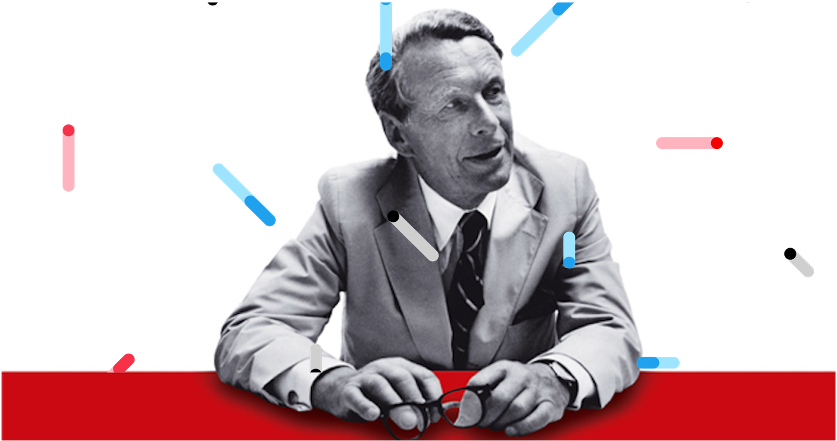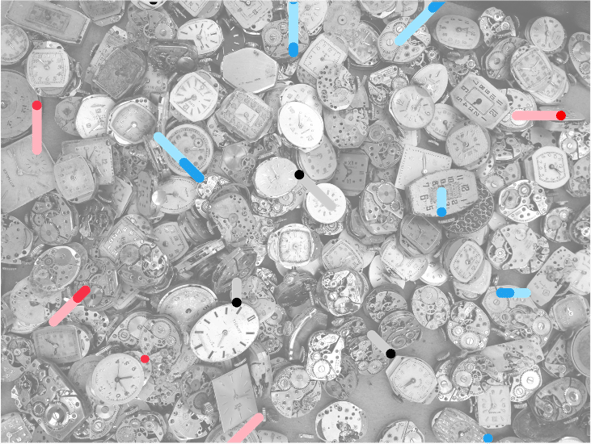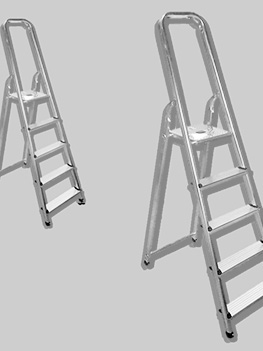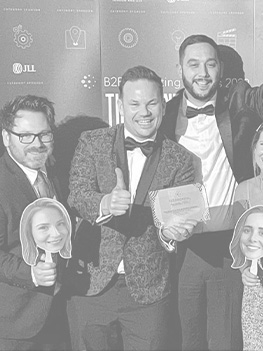January 2022
Ahoy there: How to sail the 7 C’s of Creativity
- Strategy,
- Business,
- Marketing,
- Marketing Strategy,
- Brand,
- Lead Gen,
- Demand Gen
AUTHOR

Russ Powell
Founder / MD
BEFORE YOU START:
You should know that this blog post is a special one. Why? Because it was co-created by Russ, our MD and the truly wonderful Zoe Hominick, Head of Business Marketing and CEX at O2 (Telefonica UK) following presentations they both did on the subject of creativity for the lovely people at The Business Marketing Club (BMC). Russ and Zoe’s thoughts overlapped so much that it just made sense to team up, and cover the topic of creativity as a dynamic duo. And here’s the result…
“Creativity” and “B2B marketing” aren’t two things you often hear talked about in the same sentence. Except if that sentence also includes the words “a shocking lack of…” or “I’ve never seen much…”.
And we get why. A lot of what B2B brands do or sell isn’t all that exciting, is it? In fact it’s pretty dull.
It’s probably a tiny niche that will find enterprise storage solutions, data processing tools and/or security software exciting, enthralling and worthy of any more than a basic level of attention.
And when that’s coupled with brands and senior leaders who are suffocatingly risk-adverse, who want to play it safe for fear of offending anybody then it’s not really a recipe for earth-shattering creativity is it?

But – as the old adage goes – B2B is still P2P. There are still PEOPLE making decisions, who need to be convinced, who would love to have their attention grabbed and interest piqued.
So whilst everyone else sticks to the middle of the road with their blue logos, stock imagery and endless talk of “hyper-converged, ultra-optimised, AI-powered, blah blah blah” there’s a clear opportunity for those brave enough to seize it to stand out and be different in a truly meaningful way.
It’s an opportunity to be creative.
But creativity doesn’t always come easy, does it? So, what can you do to inject some more creativity into what you do and how your brand goes about engaging your audience as people – and not a “business bot 4000”.
Well, it just so happens we’ve got 7 C’s of creativity we can help you sail on, me hearty. So climb the rigging, hoist your main sail, and let’s start out on the voyage:
Clarity
First things first, make sure you’re absolutely clear on two things:
Firstly, what’s the problem or challenge your target audience – remember they’re people -have that your product or service fixes. It’s one of the basics of marketing. It’s one of the 4 P’s for crying out loud – Product. How to you really unpack the problem your customer is looking to solve. Yes, they may want to grow their sales or increase their productivity but how exactly and how does your product help them do that?
Secondly, what are you actually looking to achieve? What’s the result your aiming for, the emotion you want to illicit, the action you want people to take?
If you’re clear on both these things you’ve got your first step and your last step done. You then need to fill that mighty gap between the two.
Constraints
This might sound odd when talking about creativity but having constraints in place is a good thing. As David Ogilvy famously said, “give me the freedom of a tight brief”.

Think about it. If someone gave you a task and just said “be creative” you’d probably end up staring at a blank page for 10 minutes before going to off to make a cup of tea and have a little cry.
But is someone says, for example “can you give me some ideas for a print campaign to advertise our latest new gizmo that we’re specifically aiming at 40+ home owners” then the constraints allow you much greater focus and the ability to really create.
Constraints channel creativity and give it greater purpose. (N.B. Important one next time you brief in your agency, FYI)
Context
This is similar to constraints but is more outwardly focussed. Nothing exists in a vacuum so you’ve got to be mindful of the wider context in which you operate, and how creative ideas might be received. What else are your customers hearing that could act as a platform or that you can juxtapose?
We’ve seen some brilliantly touching and evocative marketing over the last year or so that has tapped into wider themes and context perfectly. The KitKat bus stop ad (that wasn’t actually a real ad, but still worked perfectly) for instance.
But we’ve also seen some stinkers that have been completely tone-deaf and have ignored the world around them. The Burger King mother’s day tweet for instance.
Judge the tone and the mood right and your creativity will be seen as just that, creativity. Rather than a cack-handed attempt and being “funny”.
Clocking Off
This one may seem counterintuitive to what we’ve just discussed, but really it’s all about finding the right balance and giving yourself and your creative process time to breath.
Constraints are great for channelling and focusing creativity, but if you’re then told that you’ve only got 10 minutes to come up with the next great idea that’s a constraint too far.

The best creative thoughts and ideas often happen when you’re not expecting them to. When you’re playing with the kids, cooking dinner, or out for a run for example your brain decompresses, those little gaps between thoughts open up and new, creative ideas start to come through.
So don’t try and force things. Give creativity the time it needs.
Curiosity
You know who’s endlessly, wonderfully, brilliantly creative? Little kids. You know who also asks an infinite number of questions and is curious about everything? Little kids. Are the two linked?
We’ve no idea, we’re no child psychologist but it makes sense that those people who are most inquisitive, most curious, most interested in learning new things all the time would be the most creative.
So, channel that curious approach for your own creative ends. Read outside of your comfort zone, don’t just watch what the Netflix the algorithm tells you to watch, try something different and new. You never know what you might find that you can then connect to someone thing else…
Connection
This is really the functional use for curiosity. If you’ve got lots of different sources of information, inspiration or insight you can then better connect one to the other and uncover something different or creative. Look for the unexpected connections, surprise people.
There’s not really anything new anymore. Everything is either an iteration of an existing idea or the combination of multiple existing ideas, but if you can find those things that connect together in exciting new ways that’s pure creativity at work.

And if those two (or more) things you connect are also relevant to your audience, then happy days. They’ll definitely sit up and pay interest.
Collaboration
We’ve saved the best for last. 2 heads are always better than one, and when it comes to creativity that’s never truer.
If creativity is all about making connections and finding new ways to think about things, why would you limit yourself to just your ideas and your frames of reference? Creativity rarely comes from one person with one thought.
True creativity comes from a diversity and richness of thought with multiple people bringing their own ideas, views and experiences to the table for the benefit of the process as a whole.
Yes, too many cooks can spoil the broth and decision making by committee will often lead you back towards the bland and inoffensive B2B marketing that has become the norm. So keep your creative teams tight, try and include as diverse an array of people as possible, and give them the clarity, constraint, context (and all the other Cs) to produce something wonderfully creative.


